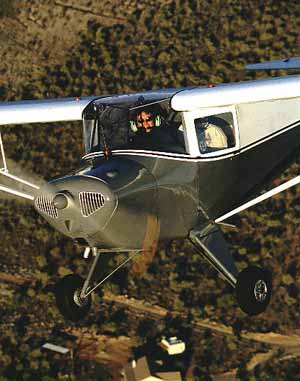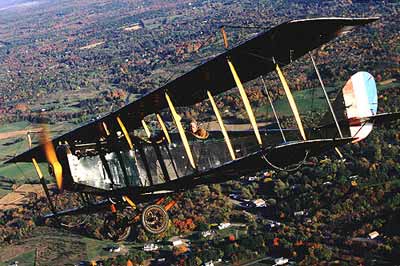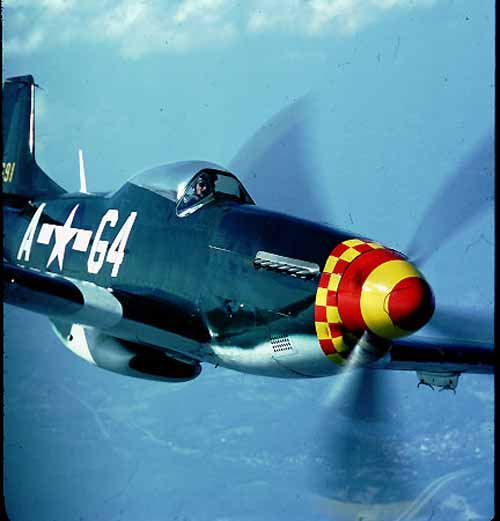DO GREAT PILOTS MAKE GREAT PLANES OR
DO GREAT PLANES MAKE GREAT PILOTS?
It is not unusual to be standing
at a fly-in watching a Mustang come down final and hear someone comment, “That
guy must be really good. He flies a P-51.” That same spectator
will totally ignore a guy right behind the Mustang in a Taylorcraft,
who made a beautiful three-point in spite of a gusting 20-knot crosswind.
We all have a tendency to judge a pilot’s “aeronautical prowess
factor” by the performance of the airplane he’s flying. That’s
a misleading as saying that the guy who keeps company with a racy looking
woman is a great lover. The ability to write big checks often
has a lot of impact in terms of the company a man keeps, aeronautically
and otherwise.
 |
A T-craft is so lightly loaded
that it is much more affected by gusts, etc., so a pilot has
to know what he's doing to do a good three-point in those conditions. |
Yes, there’s no doubt about it: some airplanes are definitely easier
than others to fly. But the question becomes—what’s the definition
of “easy?”
An airplane’s personality is normally made up of two areas, or
envelopes, one inside the other. The first defines “normal” flying.
This is the drive-it-up and drive-it-down part of an airplane’s
operational personality. The runways are long and level, and the wind
more or less on your nose and nothing has gone wrong with the airplane.
How does the airplane perform in those ideal situations?
Then you get the airplane totally screwed up, the runway/wind/weather
is definitely against you and/or pieces have started falling off the
airplane and you cross the barrier into the second area, blissfully
known as the “margin of error.”
Obviously, the boundary fence on the far side of the margin of error
is bright red and labeled “do not cross, accident on the other
side.” The relative distance between those fences, that mark the
width of the margin of error, defines whether an airplane is “hard” or “easy” to
fly, has a forgiving nature, or is continually twisting around like
a troublesome horse trying to bite your leg. And it is the pilots ability
to handle a given airplane when everything is against him that determines
how good he is.
Case in point: the Grumman F8F Bearcat has an amazing central personality.
For one thing, it basically ignores elements such as crosswinds and has
ground handling characteristics that make a kiddy car look difficult.
In the air its incredible power and super-fine controls enable you to
do exactly what you want, when you want. Assuming you do everything by
the numbers, you'll have no trouble keeping the F8F away from that first
envelope boundary.
Be advised, however, when you step over that fine, sharp edge dividing
line between "normal flying" and the "margin of error" you're
going to find the bright red "do not cross" sign is snuggled
right up against the Bearcat's normal flying personality. The margin
of error in many situations is extremely narrow. You let it get slow,
pull it too hard, or commit any one of a dozen operational no-nos and
you'll find yourself screwing your way through a cornfield, upside
down, in nothing flat.
In short, the Bearcat may be relatively easy to keep inside its "normal" flight
envelope, assuming youscrupulously follow the numbers, but, like most
high performance airplanes, it is totally intolerant of mistakes. It
has no margin of error.
 |
The Jenny may be slow with
practically non-existent controls but it redeems itself by also
being prone to quit, has no brakes and a tailskid. 'Enuff
said? |
AND THEN THERE'S THE CURTISS JENNY; THE opposite of
the Bearcat in almost every area. Flying the Jenny feels as if you're
always operating at least half way through the margin of error. For
instance, the controls are largely ornamental, which means you're at
the mercy of just about any kind of wind, and it barely has enough
power to let you leap short shrubs in feeble bounds.
Flying the airplane gives you an entirely new respect for the barnstormers
and wingwalkers of old. If you transgress into the margin of error,
you'll find that you’re really deep into marginal aviating before
you can even tell the difference between that and normal flight. In
fact, most of every flight is spent in marginal aviating.
Where the Jenny's central band of aviating is narrow, its margin for
error is so wide it'll let you flop around all day and still let you
save your butt because everything is happening so slowly. Even if you
wind up crunching it, you’re unlikely to get hurt because there’s
so much airplane and so little speed, the airframe will absorb all
the crash energy before it gets to you.
So who are the hero pilots? The ones with the easy-to-control airplanes
that have no forgiveness or the ones that are demanding the pilot to
work his rear off to maintain anything even remotely resembling a normal
flight? Can we make this judgment based on aircraft type, e.g. warbird,
antique, classic, etc.?
GO TO NEXT
PAGE
|

